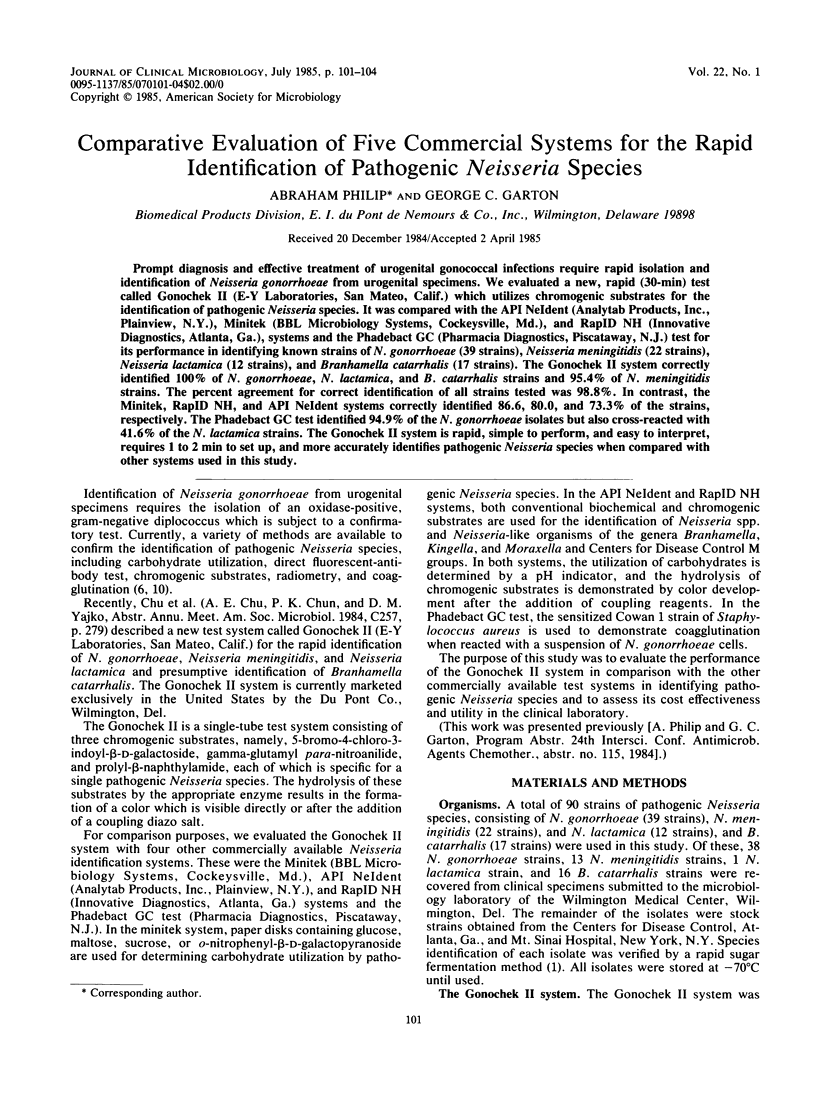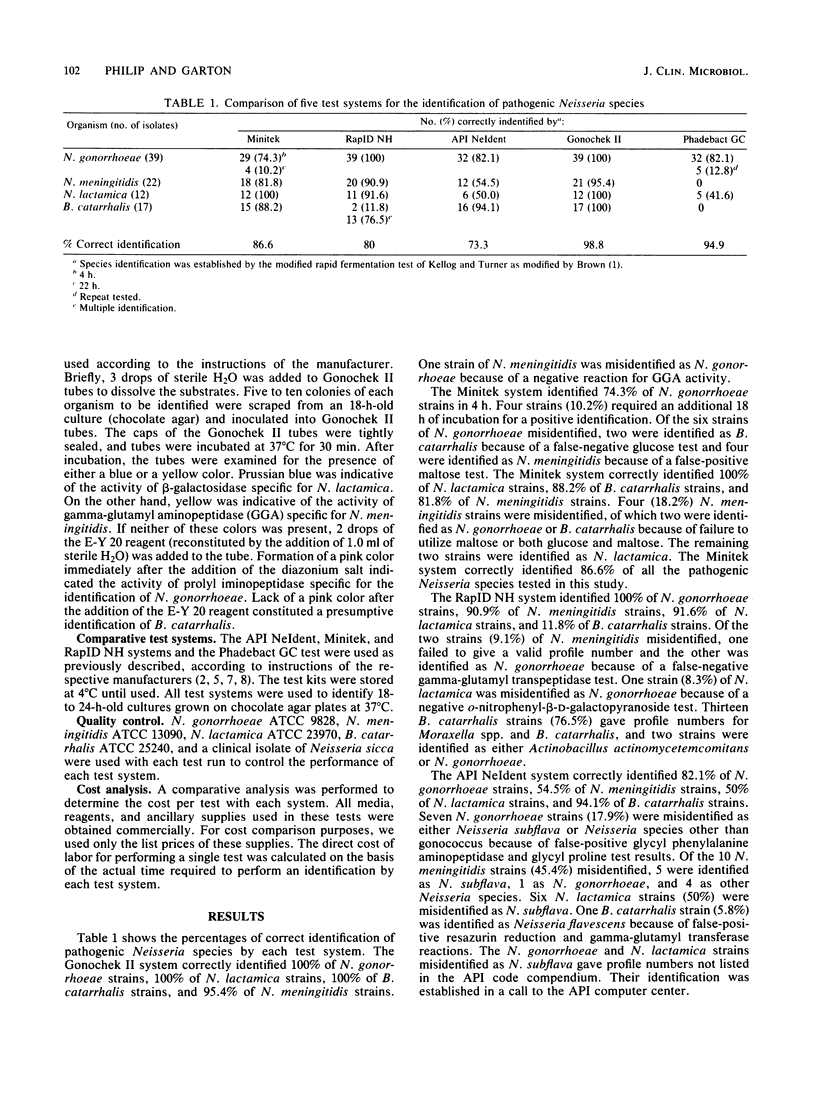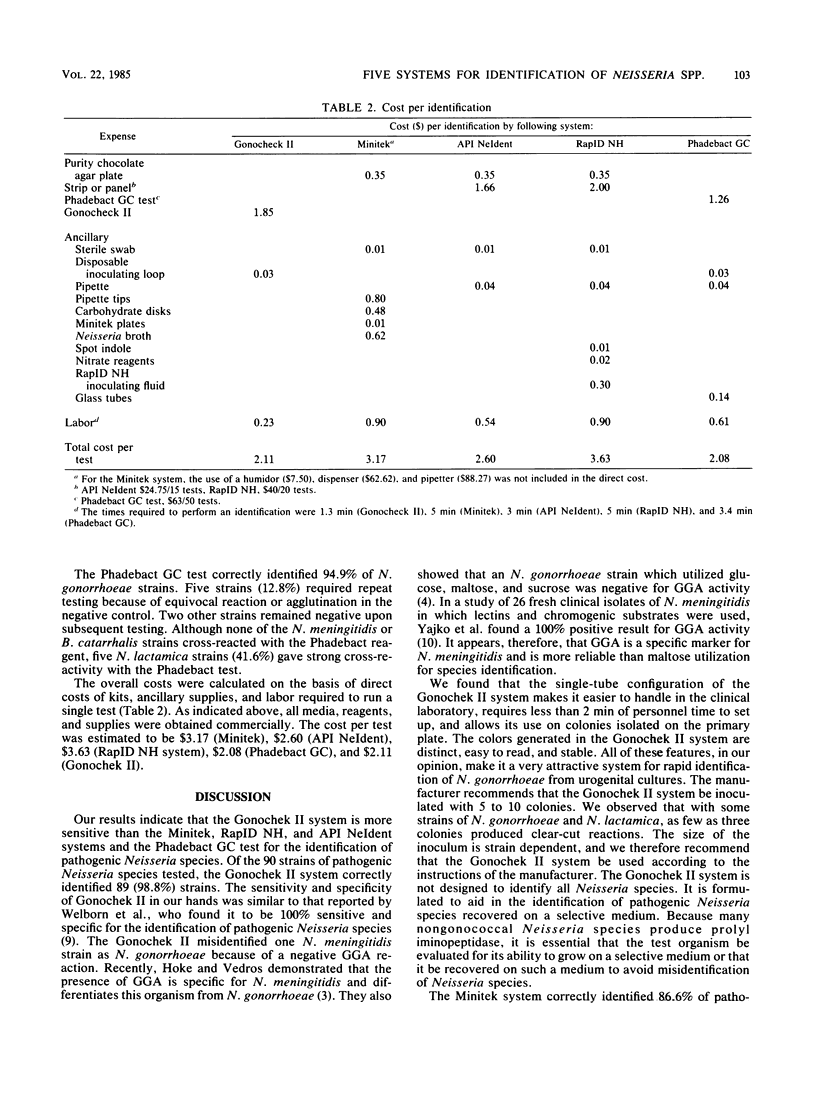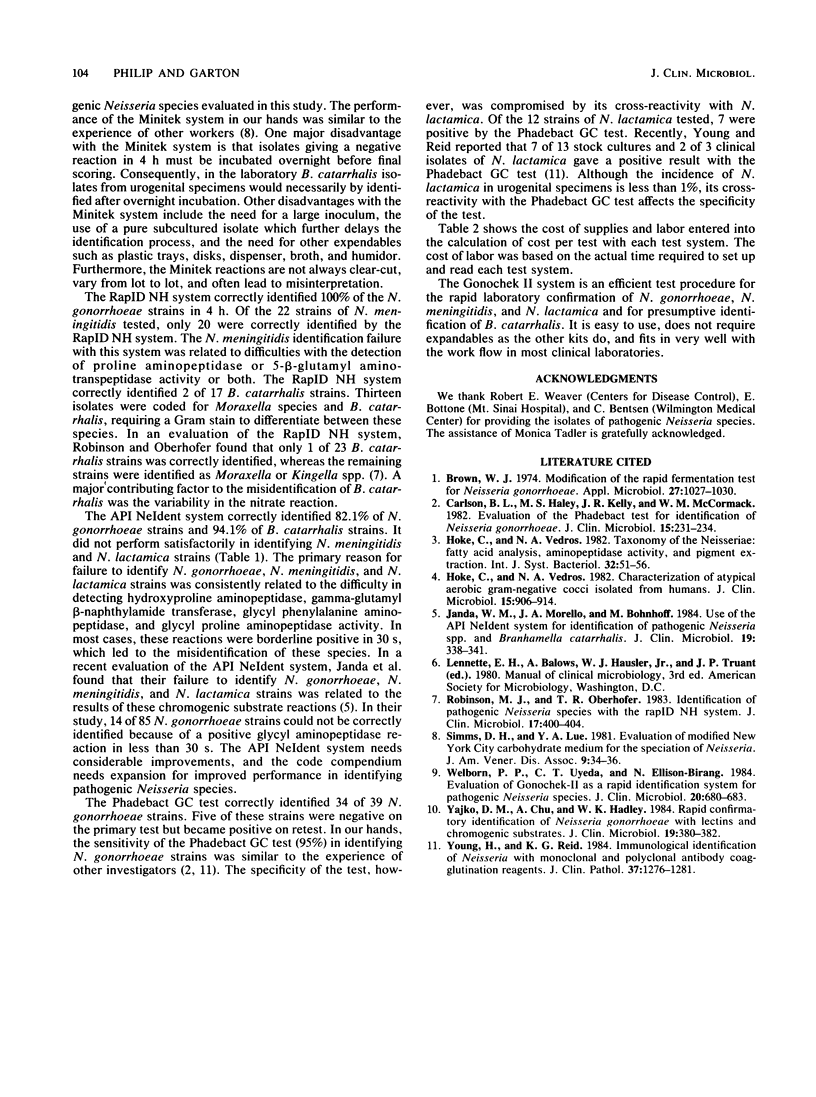Abstract
Prompt diagnosis and effective treatment of urogenital gonococcal infections require rapid isolation and identification of Neisseria gonorrhoeae from urogenital specimens. We evaluated a new, rapid (30-min) test called Gonochek II (E-Y Laboratories, San Mateo, Calif.) which utilizes chromogenic substrates for the identification of pathogenic Neisseria species. It was compared with the API NeIdent (Analytab Products, Inc., Plainview, N.Y.), Minitek (BBL Microbiology Systems, Cockeysville, Md.), and RapID NH (Innovative Diagnostics, Atlanta, Ga.), systems and the Phadebact GC (Pharmacia Diagnostics, Piscataway, N.J.) test for its performance in identifying known strains of N. gonorrhoeae (39 strains), Neisseria meningitidis (22 strains), Neisseria lactamica (12 strains), and Branhamella catarrhalis (17 strains). The Gonochek II system correctly identified 100% of N. gonorrhoeae, N. lactamica, and B. catarrhalis strains and 95.4% of N. meningitidis strains. The percent agreement for correct identification of all strains tested was 98.8%. In contrast, the Minitek, RapID NH, and API NeIdent systems correctly identified 86.6, 80.0, and 73.3% of the strains, respectively. The Phadebact GC test identified 94.9% of the N. gonorrhoeae isolates but also cross-reacted with 41.6% of the N. lactamica strains. The Gonochek II system is rapid, simple to perform, and easy to interpret, requires 1 to 2 min to set up, and more accurately identifies pathogenic Neisseria species when compared with other systems used in this study.
Full text
PDF



Selected References
These references are in PubMed. This may not be the complete list of references from this article.
- Brown W. J. Modification of the rapid fermentation test for Neisseria gonorrhoeae. Appl Microbiol. 1974 Jun;27(6):1027–1030. doi: 10.1128/am.27.6.1027-1030.1974. [DOI] [PMC free article] [PubMed] [Google Scholar]
- Carlson B. L., Haley M. S., Kelly J. R., McCormack W. M. Evaluation of the Phadebact Test for identification of Neisseria gonorrhoeae. J Clin Microbiol. 1982 Feb;15(2):231–234. doi: 10.1128/jcm.15.2.231-234.1982. [DOI] [PMC free article] [PubMed] [Google Scholar]
- Hoke C., Vedros N. A. Characterization of atypical aerobic gram-negative cocci isolated from humans. J Clin Microbiol. 1982 May;15(5):906–914. doi: 10.1128/jcm.15.5.906-914.1982. [DOI] [PMC free article] [PubMed] [Google Scholar]
- Janda W. M., Morello J. A., Bohnhoff M. Use of the API NeIdent system for identification of pathogenic Neisseria spp. and Branhamella catarrhalis. J Clin Microbiol. 1984 Mar;19(3):338–341. doi: 10.1128/jcm.19.3.338-341.1984. [DOI] [PMC free article] [PubMed] [Google Scholar]
- Robinson M. J., Oberhofer T. R. Identification of pathogenic Neisseria species with the RapID NH system. J Clin Microbiol. 1983 Mar;17(3):400–404. doi: 10.1128/jcm.17.3.400-404.1983. [DOI] [PMC free article] [PubMed] [Google Scholar]
- Simms D. H., Lue Y. A. Evaluation of modified New York City carbohydrate medium for the speciation of Neisseria. Sex Transm Dis. 1982 Jan-Mar;9(1):34–36. doi: 10.1097/00007435-198201000-00006. [DOI] [PubMed] [Google Scholar]
- Welborn P. P., Uyeda C. T., Ellison-Birang N. Evaluation of Gonochek-II as a rapid identification system for pathogenic Neisseria species. J Clin Microbiol. 1984 Oct;20(4):680–683. doi: 10.1128/jcm.20.4.680-683.1984. [DOI] [PMC free article] [PubMed] [Google Scholar]
- Yajko D. M., Chu A., Hadley W. K. Rapid confirmatory identification of Neisseria gonorrhoeae with lectins and chromogenic substrates. J Clin Microbiol. 1984 Mar;19(3):380–382. doi: 10.1128/jcm.19.3.380-382.1984. [DOI] [PMC free article] [PubMed] [Google Scholar]
- Young H., Reid K. G. Immunological identification of Neisseria gonorrhoeae with monoclonal and polyclonal antibody coagglutination reagents. J Clin Pathol. 1984 Nov;37(11):1276–1281. doi: 10.1136/jcp.37.11.1276. [DOI] [PMC free article] [PubMed] [Google Scholar]


